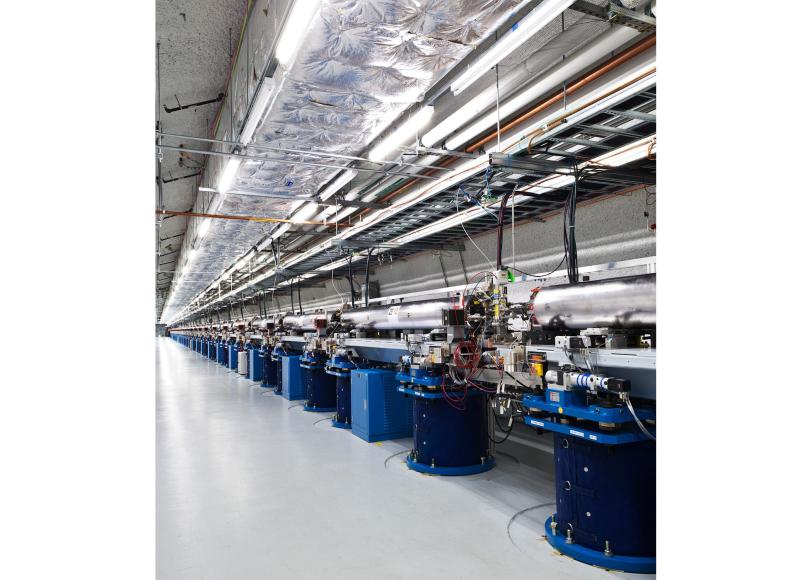Linac Coherent Light Source Has Purest X-ray Beam Ever, Study Confirms
The world's first X-ray laser is not only a true laser, but it’s an extremely good one
from Physical Review Focus
The world's first X-ray laser is not only a true laser, but it’s an extremely good one, according to measurements reported Sept. 30 in Physical Review Letters. Researchers studying the Linac Coherent Light Source (LCLS) characterized the coherence of the laser – the degree to which the light waves are synchronized – and found that it produces the most coherent X-ray radiation ever measured. With such a high-quality beam, the machine can determine atomic-scale structure of materials at a high level of precision, which will be useful in fields as diverse as drug discovery, materials engineering, and archaeology.
Since the 1957 invention of the maser – the microwave predecessor to the visible-light laser – researchers have been developing lasers with ever shorter wavelengths and applying them to a growing variety of purposes. But making lasers with short wavelengths is challenging. For a light source to be declared a laser, the majority of its photons must be coherent – oscillating in synch. A high coherence means that the light will diffract more precisely, which for an X-ray beam means sharper images of atomic structure. Laser beams also have various patterns, or modes, of oscillation, just as strings and drumheads do, and the ideal beam has all of its photons contributing to a single mode.
When LCLS at SLAC National Accelerator Laboratory in Palo Alto, California, began operating in 2009, the evidence for laser light was the presence of bright, monochromatic, focused, X-ray pulses. However, until now, estimates of the coherence of the light were based on simulations.
Click here for full story ...
(Editor's Note: DESY lab also noted the finding in a news article today.)
